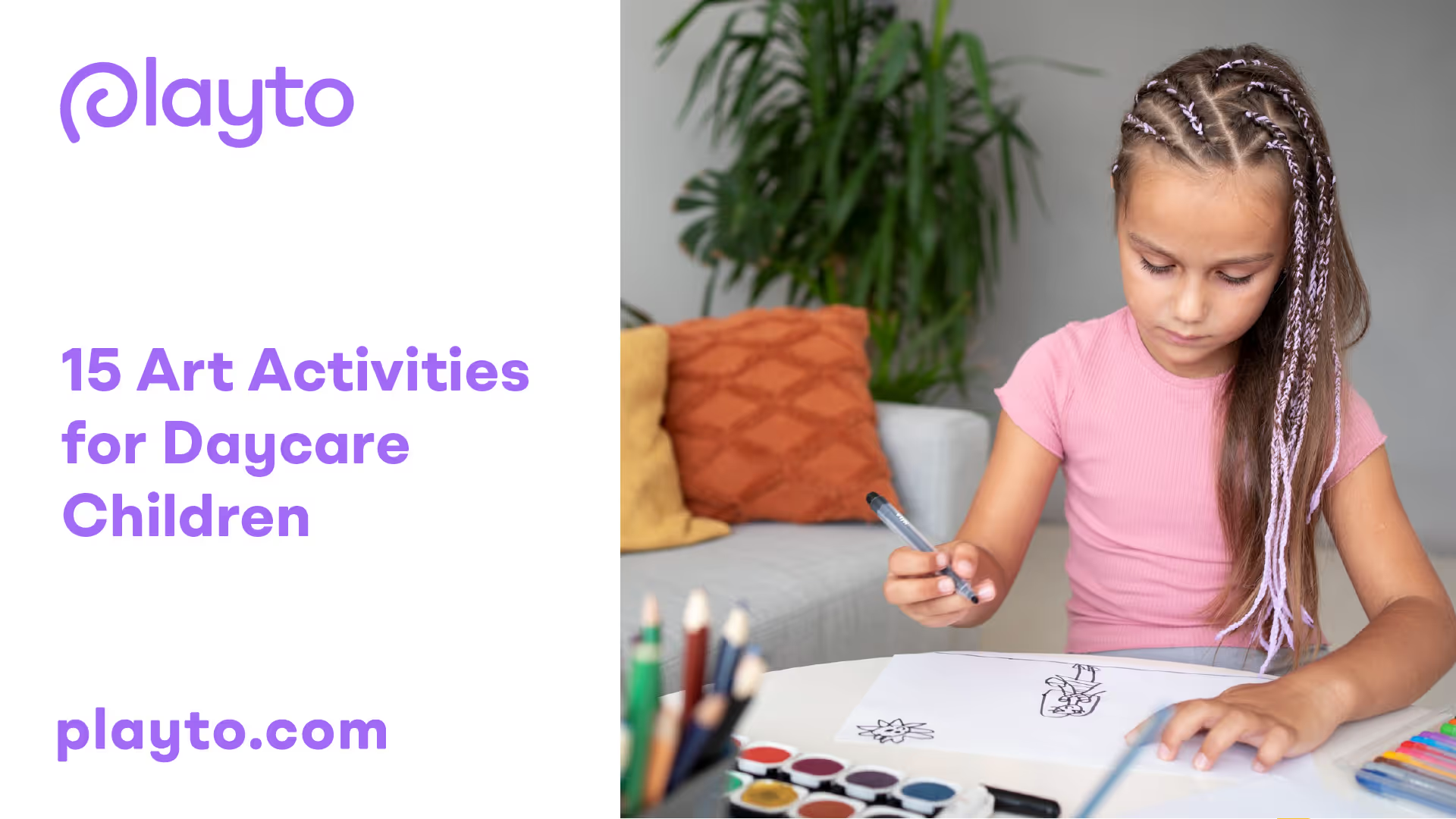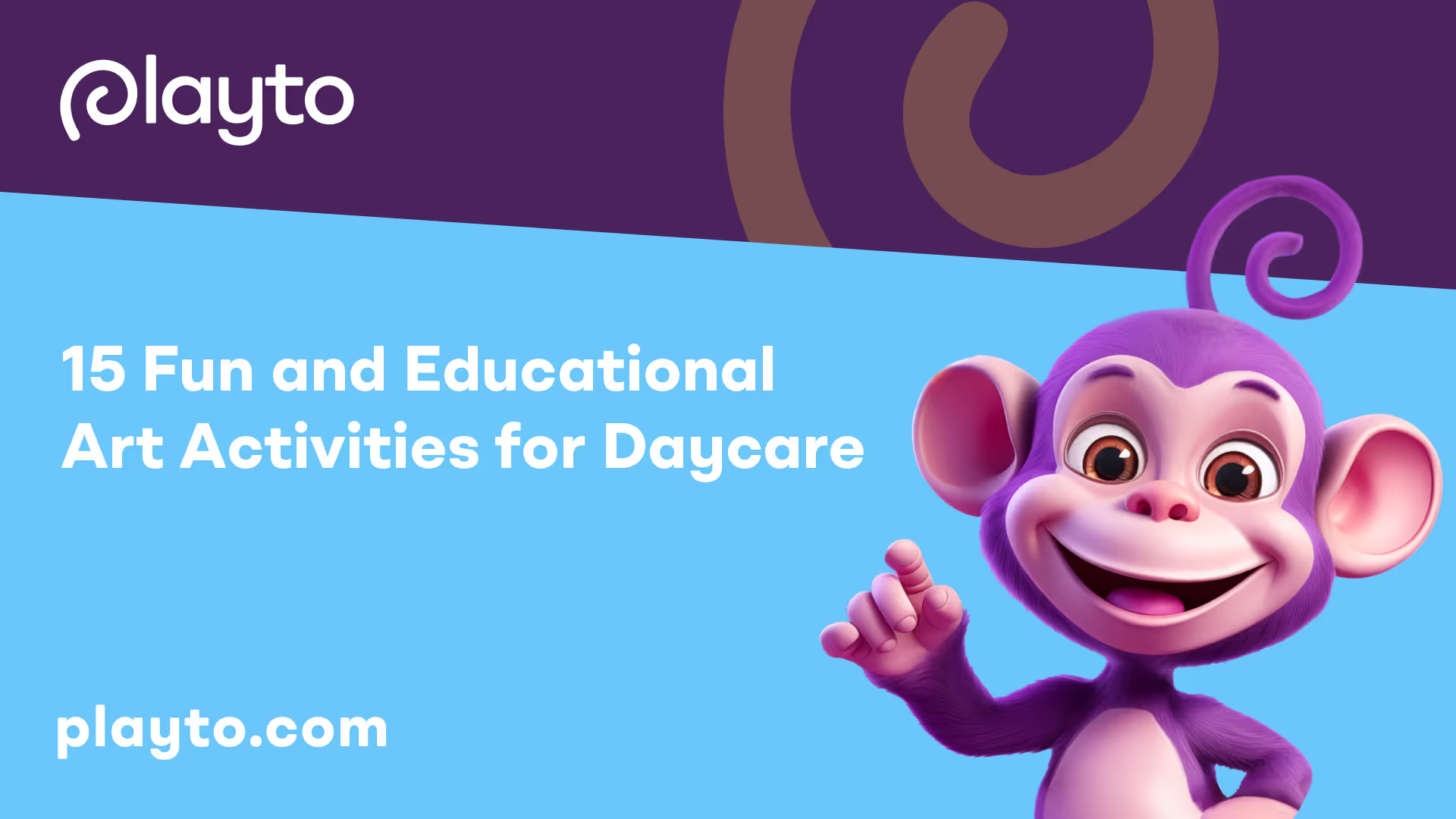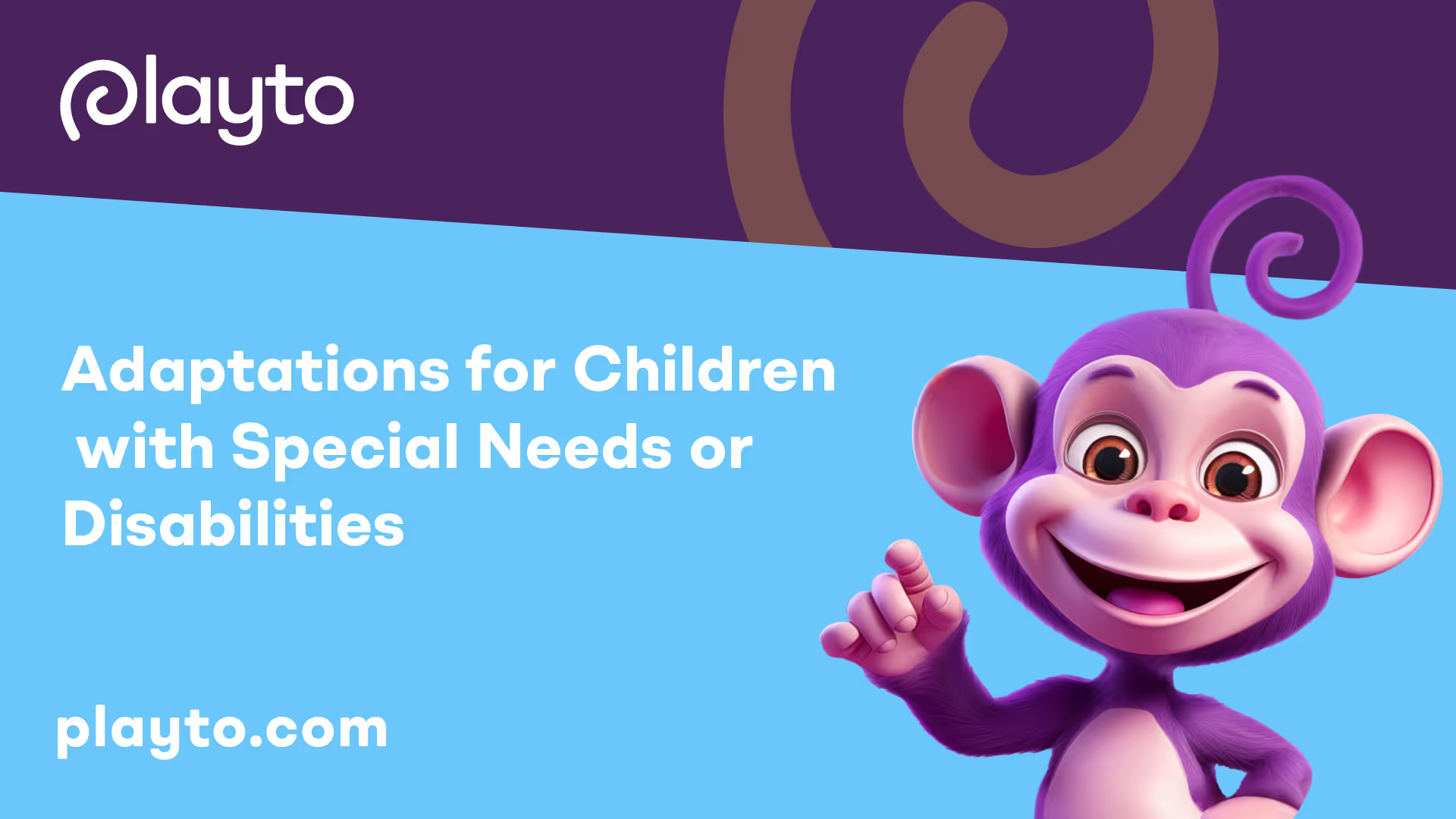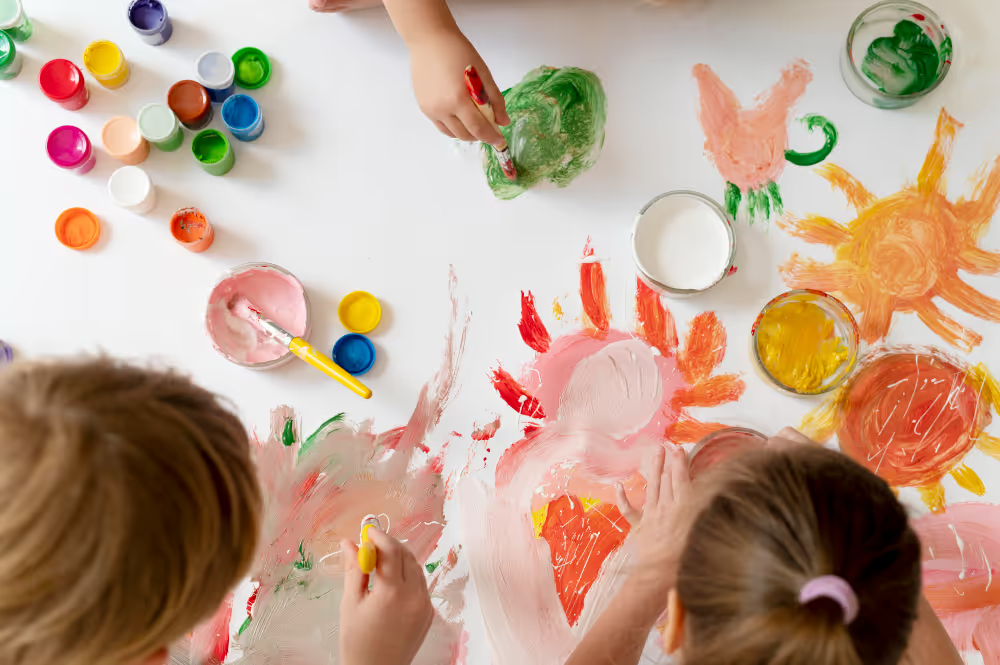15 Art Activities for Daycare Children: Unleash Creativity and Learning

Art is a crucial component of early childhood development, fostering creativity, fine motor skills, and self-expression. For daycare providers and early childhood educators, having a diverse array of art activities at your fingertips can make all the difference in engaging young minds and nurturing their artistic potential.
In this post, we'll share 15 exciting and easy-to-implement art activities perfect for daycare settings. We'll explain how to set up each activity, discuss the benefits for children's development, and offer tips to make these projects accessible for various age groups.
Why are art activities important for daycare children?
Before we dive into the activities, let's briefly explore why art is so crucial for young children:
- Develops fine motor skills: Manipulating art materials helps children refine their hand-eye coordination and dexterity.
- Encourages self-expression: Art gives children a way to communicate their thoughts and feelings non-verbally.
- Boosts creativity: Open-ended art activities allow children to think outside the box and explore their imagination.
- Enhances cognitive skills: Art projects often involve problem-solving, decision-making, and spatial awareness.
- Builds confidence: Completing an art project gives children a sense of accomplishment and pride in their work.
Now, let's explore 15 engaging art activities that will captivate and educate your daycare children. [1]
15 Fun and Educational Art Activities for Daycare

- Finger Painting:
- Materials needed: Washable finger paints, large paper sheets, smocks or old t-shirts
- Finger painting is a classic activity that allows children to explore colors and textures using their hands. It's perfect for sensory development and encourages free expression.
- Tip: For younger children, limit the color choices to prevent overwhelming them. For older kids, introduce color mixing concepts.
- Playdough Sculpting:
- Materials needed: Homemade or store-bought playdough, plastic tools (optional)
- Playdough is versatile and reusable, making it perfect for daycare settings. Children can create shapes, animals, or imaginary creatures, developing their fine motor skills and creativity.
- Tip: Make your own playdough with the children as an additional activity. This introduces basic concepts of measurement and following instructions.
- Collage Making:
- Materials needed: Construction paper, magazines, scissors (child-safe), glue sticks
- Collages allow children to experiment with shapes, colors, and textures. This activity enhances decision-making skills and spatial awareness.
- Tip: For younger children, pre-cut shapes and images. Older kids can practice their cutting skills by selecting and cutting out their own pictures.
- Nature Art:
- Materials needed: Collected natural items (leaves, twigs, flowers), paper, glue
- This activity connects children with nature while fostering creativity. Take a nature walk to collect items, then create art using these natural elements.
- Tip: Discuss the shapes, colors, and textures of the natural items to enhance vocabulary and observation skills.
- Sponge Painting:
- Materials needed: Sponges cut into shapes, washable paint, paper
- Sponge painting introduces children to different textures and patterns. It's an excellent activity for developing grip strength and hand-eye coordination.
- Tip: Cut sponges into various shapes to create themed art (e.g., stars for a night sky, circles for bubbles).
- Chalk Drawing:
- Materials needed: Sidewalk chalk, outdoor space or chalkboard
- Chalk drawing allows for large-scale creativity and gross motor skill development. It's perfect for outdoor play on nice days.
- Tip: Create group murals or play drawing games like tic-tac-toe to encourage social interaction.
- Paper Plate Masks:
- Materials needed: Paper plates, markers, craft supplies (feathers, sequins, etc.), elastic bands
- This activity combines art with imaginative play. Children can create animal masks or fantastical creatures, enhancing their creativity and storytelling abilities.
- Tip: Tie this activity into a story or theme you're exploring in your daycare for added educational value.
- Watercolor Resist Art:
- Materials needed: White crayons, watercolor paints, brushes, paper
- This "magic" art activity delights children as they reveal hidden drawings. It introduces them to the concept of resist techniques in art.
- Tip: Draw simple shapes or write children's names in white crayon before they paint over with watercolors.
- Salt Dough Ornaments:
- Materials needed: Salt dough (flour, salt, water), paint, string
- Creating and decorating salt dough ornaments helps develop fine motor skills and three-dimensional thinking. Plus, children can take home a lasting creation.
- Tip: Use cookie cutters for younger children. Older kids can shape their own designs.
- Marble Painting:
- Materials needed: Marbles, washable paint, shallow box or tray, paper
- This unique painting technique is fun and engaging. It introduces concepts of cause and effect as children roll marbles through paint to create designs.
- Tip: Secure the paper inside the box with tape to prevent it from moving during the activity.
- Tissue Paper Art:
- Materials needed: Colored tissue paper, white glue, water, paintbrushes, cardstock
- This activity creates beautiful, stained-glass-like effects. It helps children learn about color blending and develops fine motor skills as they tear and place tissue paper.
- Tip: Pre-cut tissue paper for younger children. Older kids can practice tearing paper themselves.
- Bubble Wrap Printing
- Materials needed: Bubble wrap, paint, paper
- Bubble wrap printing creates interesting textures and patterns. It's a fun way to explore cause and effect and practice applying even pressure.
- Tip: Tape bubble wrap around rolling pins for an easier grip for smaller hands.
- Yarn Painting:
- Materials needed: Yarn cut into pieces, paint, paper
- This activity offers a unique way to "paint" by dipping yarn in paint and dragging it across paper. It's great for developing grip strength and hand-eye coordination.
- Tip: Use different thicknesses of yarn for varied effects.
- Shaving Cream Marbling:
- Materials needed: Shaving cream, food coloring or liquid watercolors, paper, tray
- Marbling with shaving cream is a sensory-rich activity that creates beautiful, swirled designs. It's excellent for color mixing exploration and sensory development.
- Tip: This can get messy, so make sure to protect surfaces and clothing.
- Recycled Art Sculptures:
- Materials needed: Clean recyclables (boxes, bottles, etc.), tape, glue, paint
- Creating sculptures from recycled materials encourages problem-solving and spatial thinking. It also introduces concepts of sustainability and reusing materials.
- Tip: Set a theme or challenge to guide the sculpture creation, like "create a robot" or "build the tallest tower."
Safety Precautions and Guidelines
When conducting these art activities, it's crucial to prioritize safety:
- Supervision: Always maintain close supervision, especially during activities involving small objects or potentially harmful materials.
- Age-appropriate materials: Ensure all materials are non-toxic and suitable for the age group you're working with.
- Allergies: Be aware of any allergies children may have to materials like paint or glue.
- Proper use of tools: Teach children how to safely handle scissors, paintbrushes, and other tools.
- Clean-up routine: Establish a clean-up routine to prevent slips and falls from spilled materials.
- Protective gear: Use smocks or old t-shirts to protect clothing during messy activities.
- Workspace preparation: Cover tables with newspaper or plastic sheets for easy clean-up.
- First aid: Keep a first aid kit nearby and know how to use it.
- Ventilation: Ensure good ventilation when using strong-smelling materials like shaving cream.
- Hand washing: Encourage regular hand washing before and after activities.
By following these guidelines, you can create a safe environment that allows children to fully enjoy and benefit from these creative experiences.
Adaptations for Children with Special Needs or Disabilities

When implementing art activities in a daycare setting, it's crucial to ensure that all children, including those with special needs or disabilities, can participate fully and enjoy the creative process. Here are some adaptations to consider:
- Tip: For children with visual impairments, use textured materials like puffy paint or sand mixed with glue to create tactile art experiences.
- Tip: Provide adaptive tools such as easy-grip brushes or scissors for children with fine motor challenges.
- Tip: For children with sensory sensitivities, offer alternatives to messy materials, like using colored tape instead of paint for certain activities.
- Tip: Use verbal cues and hand-over-hand assistance for children who need extra guidance in completing tasks.
- Tip: Break down complex activities into smaller, manageable steps for children with cognitive disabilities.
- Tip: For children with limited mobility, set up easels or vertical surfaces to make art activities more accessible. [2]
Remember, the goal is to create an inclusive environment where every child can express their creativity. Be flexible and willing to modify activities as needed to accommodate individual needs and abilities.
Strategies for Managing Group Art Projects and Collaborations
Group art projects can be an excellent way to foster teamwork, communication, and social skills in daycare settings. Here are some strategies to effectively manage these collaborative activities:
- Plan age-appropriate projects: Choose activities that suit the developmental levels of all children involved. This ensures everyone can contribute meaningfully.
- Assign roles: Give each child a specific task or role within the project. This helps prevent conflicts and ensures everyone feels included.
- Rotate responsibilities: For longer projects, rotate roles so that each child gets to experience different aspects of the creation process.
- Encourage communication: Teach children to express their ideas clearly and listen to others' suggestions. This promotes respect and cooperation.
- Set clear expectations: Explain the project goals and behavioral expectations before starting. This helps maintain focus and reduces confusion.
- Provide ample space: Ensure there's enough room for all children to work comfortably without crowding each other.
- Use visual aids: Create simple charts or diagrams to illustrate project steps, making it easier for children to follow along.
- Celebrate the process: Emphasize the importance of working together rather than focusing solely on the final product.
- Offer guidance: Be ready to step in and offer suggestions or mediate conflicts if needed, but allow children to problem-solve when possible.
- Reflect and discuss: After completing the project, gather the group to discuss what they learned and how they felt about working together.
By implementing these strategies, you can create positive group art experiences that not only produce beautiful collaborative works but also teach valuable social and emotional skills. [3]
Eco-Friendly Art Supplies and Sustainability Practices
Incorporating environmentally friendly practices into your art activities not only benefits the planet but also teaches children valuable lessons about sustainability. Here are some tips for creating eco-conscious art experiences:
- Use natural materials: Encourage children to create art with leaves, twigs, pebbles, and other found objects from nature.
- Opt for recycled paper: Choose recycled paper products for drawing and painting activities.
- Make homemade paint: Create non-toxic paints using ingredients like vegetable juices, spices, and natural food coloring.
- Repurpose materials: Transform cardboard boxes, plastic containers, and fabric scraps into art supplies.
- Choose eco-friendly brands: When purchasing art supplies, look for products made from sustainable materials and packaged in recyclable containers.
- Create a recycling station: Set up clearly labeled bins for recycling paper, plastic, and other materials used in art projects.
- Teach conservation: Show children how to use materials efficiently and avoid waste.
- Organize a supply swap: Encourage families to exchange gently used art supplies instead of buying new ones.
- Compost natural materials: Set up a compost bin for biodegradable art materials like paper and plant-based items.
- Display digital art: Reduce paper usage by occasionally creating and displaying art digitally using tablets or computers.
By adopting these eco-friendly practices, you'll not only reduce your environmental impact but also instill important values of conservation and resourcefulness in the children under your care.
Conclusion
Incorporating these 15 art activities into your daycare routine will not only keep children engaged and entertained but also support their cognitive, emotional, and physical development. Remember to always supervise activities, especially those involving small items or potentially messy materials.
The key is to focus on the process rather than the end product. Encourage exploration, praise effort, and celebrate each child's unique creations. By fostering a love for art early on, you're helping to shape creative, confident, and expressive individuals.
With these activities in your toolkit, you're well-equipped to nurture the budding artists in your daycare, turning everyday moments into opportunities for learning and growth through the power of art.
